
I had almost completely drifted off to sleep, my eyes tightly shut, my head propped up against the side of the Soviet era minivan as it raced through the Kazakhstan desert in the dark of night.
Then suddenly, THUD!
The jarring impact followed by the shrieks of my fellow passengers jolted me wide awake. As my head bounced off the inside of the van, I grabbed at the seat, trying to keep my balance as we swerved off the dirt road, only to swing right back onto it again. Within seconds, the balance of the minivan was restored and the driver continued on, barely flinching.
I asked Blanca, the only other tourist in the group, what happened.
“We hit a camel.”
Of course we did. How could a day-long pilgrimage to an underground mosque in the middle of the desert be complete without hitting a camel?
Unfortunately, we were guilty of a camel hit-and-run, so while I know the minivan lost its rear view mirror and a back window popped out, I have no clue how the poor camel fared.
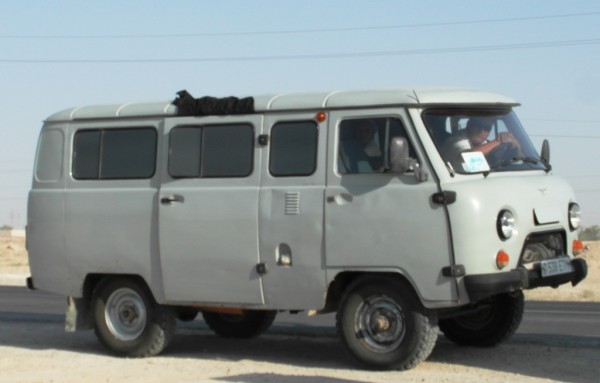
But that isn’t what this post is about.
The day began about sixteen hours earlier, when the minivan picked me up from my hotel in Aktau to begin one of the most important pilgrimage routes in Kazakhstan. The sun was still rising as I joined Blanca (who I met the day before and invited me along) and a group of Kazakh pilgrims for the five hour drive into the desert to the underground mosque known as Beket Ata.
Beket Ata was named for a prominent Sufi leader who built a madrassah and several underground mosques in the Mangistau region of Kazakhstan. He died at the age of 63 (also the age at which the Prophet Muhammad died) and he was buried at Beket Ata. Interestingly, some consider Sufism to be the inner, mystical dimension of Islam, while others believe it is outside the sphere of Islam altogether.
Before reaching Beket Ata, we made a required stop at Shopan Ata – the underground mosque of another Sufi who was said to have inspired Beket Ata. Just before reaching Shopan Ata, we stopped at a small, roofless mausoleum belonging to Shopan Ata’s son-in-law just long enough for the pilgrims to tie prayer cloths at the mausoleum and recite a short prayer.
Upon reaching Shopan Ata, we followed the pilgrims (three women and their children) first to the toilets (pilgrims are supposed to cleanse themselves by, uh, taking care of business), then to a dining hall where we were offered tea with milk and a variety of cookies, candies and dried fruit. We listened to a prayer and then followed the pilgrims past a large cemetery to a small cave that was the actual mosque of Shopan Ata. After another prayer, the imam approached Blanca and me, asking in Russian where we were from. He then explained the history of the mosque, presented us with prayer clothes and wished us well. The visit continued as we walked up a hill to another shrine and then into the cemetery to a well, from which everyone drank a cup full of slightly salty water.
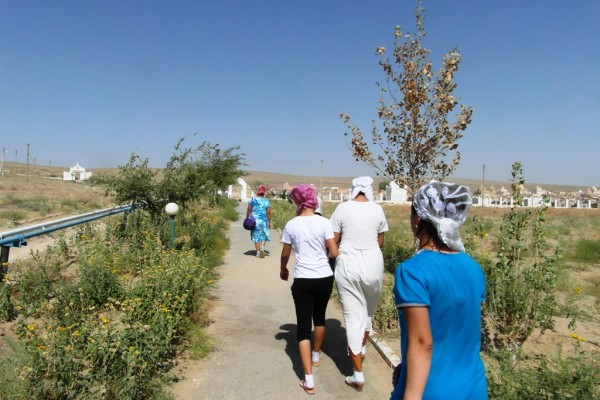
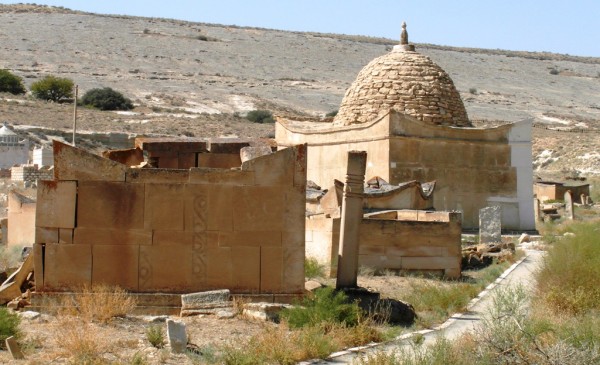
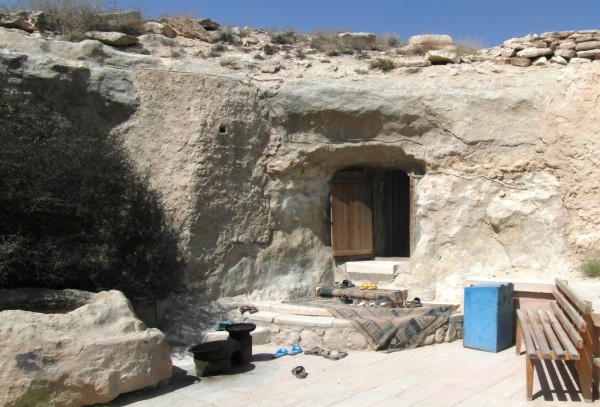
From Shopan Ata, we drove two more hours to finally reach Beket Ata. I had imagined itwould look something like the other cave monasteries or churches I visited in Turkey, Georgia or Armenia – a series of rooms built into the side of a mountain. The pilgrimage to Beket Ata is often undertaken as an overnight trip, so I envisioned groups of pilgrims sleeping on mats in large caves with few amenities.
Not so much.
We arrived to find a fairly modern guesthouse (built in 2000), with sleeping areas that were air conditioned. As we did at Shopan Ata, we began by visiting the toilets and then sitting down to more tea, cookies, candies and dried fruit. Considering that my visit coincided with Ramadan, this confused me as I thought all Muslims should be fasting during daylight hours. I could only conclude that either these Sufis did not consider themselves Muslim or that there is some exception for pilgrims.
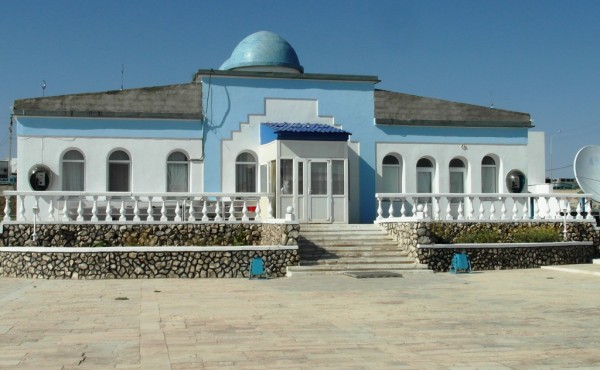
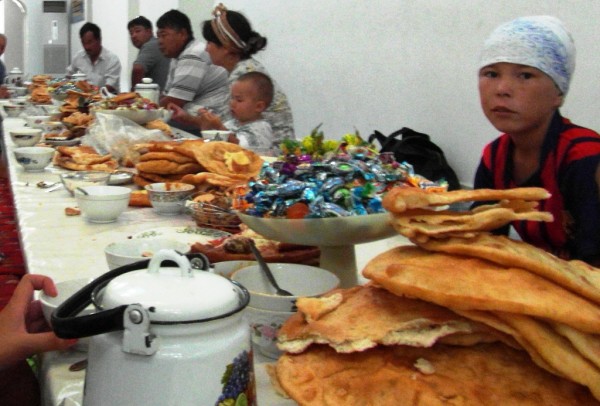
After a short rest and another prayer, it was time to finally visit the underground mosque. We followed our group of pilgrims and dozens others through a brick arch and caught our first glimpse of Beket Ata – far off in the distance, down what appeared to be an almost never-ending set of stone stairs.
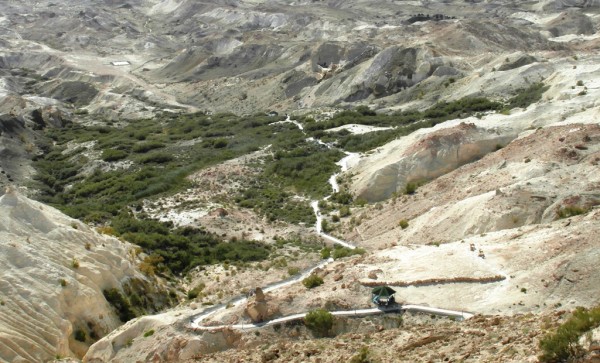
We methodically descended the stairs, under a blazing and unforgiving sun that left me drenched in sweat. I was kicking myself for only bringing a headscarf and not a hat. Every few hundred meters, we found a shelter and enjoyed the slightest amount of shade before pushing on. Shortly before reaching the mosque, I stopped to fill my water bottle with spring water. Only when I was finished did I realize that the pilgrims all carried empty bottles with them that they would not fill until after visiting the mosque. Oops.

Arriving at Beket Ata was anti-climactic.
Small groups of pilgrims took turns pushing their way into the tiny cave that was the mosque. With about twenty of us squeezed into one room for another prayer, it felt even hotter than it did outside. The whole thing lasted less than five minutes.
Then came the biggest challenge of all: the brutal walk back up the mountain. I lingered longer and longer at each shelter, trying to quench my thirst while conserving water so I would have enough to last me until I reached the top. I used a mental image of the air conditioned sleeping room as motivation to keep myself going.
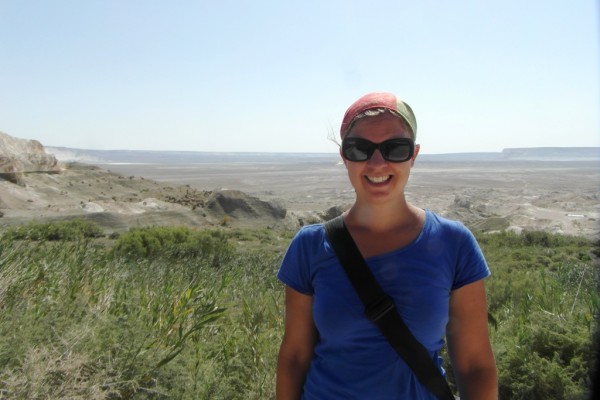
By the time I returned to the guesthouse, the entire journey had taken over three hours.
After another rest and more tea and snacks, it was time for dinner. All of the women gathered in one room and the men in another. We sat in small groups around mats on the floor and the dug into a communal bowl full of sticky rice and greasy mutton. It was delicious, but messy! Then, they passed around cups of broth to drink before serving more tea. Finally, they handed out pieces of cloth for us to take with us – mine was blue velvet with gold glitter on it, similar to the material used in many of the traditional Kazakh dresses.
And then we piled into the minivan to start the long drive across the desert back to Aktau, stopping only to survey the damage from our unfortunate camel hit-and-run.
If you go
The pilgrimage to Beket Ata is one of the primary reasons many tourists come to Aktau, but I was initially very frustrated trying to figure out how to get there. Most travel agencies charge a ridiculous amount of money to make the trip – I was quoted well over $1,000! My hotel tried finding a driver to take me, but to no avail. Lonely Planet says you can go by taking a minibus from Aktau to Zhanaozen, from where jeeps and minivans leave regularly to Beket Ata, but that was from 2010 and I had no idea if it was still accurate. In the end, Blanca’s Couchsurfing host was able to arrange for us to join the minivan of pilgrims for just 4,000 tenge – about $27.
Regardless of price, I think the way we did it was perfect. The pilgrims and imams warmly welcomed us and encouraged us to participate in everything even though neither of us ae Muslim or Sufi. After dinner, several Kazakh girls surrounded us, eager to practice their English. I am afraid that going with a guide hired through a travel agency would not have provided the same authentic experience.
